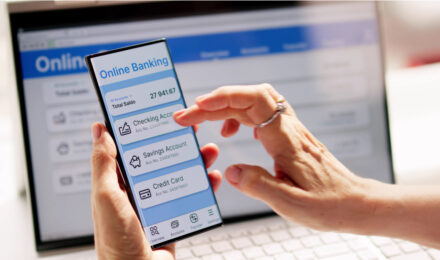Over the past decade, the way we manage money has transformed dramatically. From digital payments and mobile banking to cryptocurrencies and AI-driven financial tools, these innovations offer unprecedented convenience—but they also require a new level of financial savvy to avoid pitfalls like fraud, overspending, and poor investment decisions. Whether you’re already comfortable with technology or just beginning to explore fintech, this guide will help you navigate the modern, cashless financial landscape with confidence.
1. Why Cash Is Fading Away
Global trends show a steady decline in traditional cash transactions. According to the World Bank, up to 80% of payments in some developing economies are now digital. Driving this shift are:
- Mobile peer-to-peer apps (Venmo, PayPal, Cash App)
- Contactless payments and digital wallets (Apple Pay, Google Pay)
- Cryptocurrencies & blockchain platforms (Bitcoin, DeFi applications)
- AI-powered banking assistants (chatbots and robo-advisors)
2. Benefits of a Cashless System
- Convenience
No need to hunt for ATMs or carry bills—transactions happen straight from your phone. - Enhanced Security
When used properly, digital payments reduce theft risk better than carrying cash. - Expense Tracking & Budgeting
Many apps automatically sort and categorize your spending. - Global Reach
Send or receive money anywhere in the world, instantly and often cheaper than wire transfers.
Note: These perks come hand-in-hand with challenges—cybersecurity threats, the temptation to overspend because money isn’t tangible, and potential exclusion of those without smartphones or bank accounts.
3. Essential Skills for Managing Digital Money
A. Protecting Your Finances Online
- Enable Two-Factor Authentication (2FA) on every financial app.
- Review Statements Regularly to spot unauthorized charges.
- Avoid Public Wi-Fi for sensitive transactions; use a VPN or mobile data instead.
- Beware of Phishing—never click suspicious links in emails or texts.
B. Curbing Overspending
- Set Spending Alerts in your banking or money-management apps.
- Use Multiple Accounts (e.g., one for bills, one for daily expenses).
- Apply the “24-Hour Rule” before non-essential purchases to avoid impulse buys.
4. Understanding Digital Investments
Digital platforms have democratized investing, whether in stocks or cryptocurrencies. Keep these guiding principles in mind:
- Diversify Your Portfolio—don’t put all your funds into a single asset like Bitcoin or one hot stock.
- Do Your Homework—research before you invest to steer clear of hype-driven traps.
- Choose Regulated Platforms—trade only on exchanges or brokerages overseen by reputable financial authorities.
5. Overcoming Key Risks
Cyber-Threats
- Fraud & Identity Theft: Freeze accounts at the first sign of suspicious activity.
- Data Privacy Concerns: Tighten app permissions and limit the personal data you share.
Financial Exclusion
Millions still lack access to digital finance. To bridge the gap, many governments and banks now offer:
- Digital Literacy Programs
- Low-Cost Banking Options for unbanked or underbanked populations
Over-Reliance on Credit & Buy-Now-Pay-Later (BNPL)
Services like Afterpay and Klarna can encourage reckless spending. Treat BNPL offers like credit cards: use only after careful consideration and within a broader budget plan.
6. Top Tools for Smart Cashless Management
| Tool Category | Examples | Key Benefit |
|---|---|---|
| Budgeting Apps | Mint, PocketGuard | Automatic expense tracking |
| Investment Platforms | Robinhood, Acorns, eToro | Easy access to markets |
| Digital Banks | Chime, Revolut | No-fee checking and savings |
| Cryptocurrency Wallets | Trust Wallet, MetaMask | Secure storage for digital assets |
7. Building Lasting Financial Health
- Automate Savings & Investments
Use apps like Digit or Wealthfront for micro-savings, and set up recurring contributions to retirement accounts. - Stay Informed
Follow trusted financial blogs and enroll in free literacy courses to keep pace with evolving fintech. - Teach the Next Generation
Tools such as Greenlight help parents introduce children to budgeting, saving, and investing.
Conclusion: Take Control of Your Digital Finances
The transition to a cashless economy is here to stay, bringing both opportunities and risks. By sharpening your financial literacy, adopting secure practices, and leveraging digital tools wisely, you can master your money and thrive in today’s digital world.
Next Steps to Get Started
- Conduct a digital finance audit—review all your payment and banking apps.
- Activate security features like 2FA on every account.
- Set up small, automated savings or investment transfers beginning this month.
Over the past decade, the way we manage money has transformed dramatically. From digital payments and mobile banking to cryptocurrencies and AI-driven financial tools, these innovations offer unprecedented convenience—but they also require a new level of financial savvy to avoid pitfalls like fraud, overspending, and poor investment decisions. Whether you’re already comfortable with technology or just beginning to explore fintech, this guide will help you navigate the modern, cashless financial landscape with confidence.
1. Why Cash Is Fading Away
Global trends show a steady decline in traditional cash transactions. According to the World Bank, up to 80% of payments in some developing economies are now digital. Driving this shift are:
- Mobile peer-to-peer apps (Venmo, PayPal, Cash App)
- Contactless payments and digital wallets (Apple Pay, Google Pay)
- Cryptocurrencies & blockchain platforms (Bitcoin, DeFi applications)
- AI-powered banking assistants (chatbots and robo-advisors)
2. Benefits of a Cashless System
- Convenience
No need to hunt for ATMs or carry bills—transactions happen straight from your phone. - Enhanced Security
When used properly, digital payments reduce theft risk better than carrying cash. - Expense Tracking & Budgeting
Many apps automatically sort and categorize your spending. - Global Reach
Send or receive money anywhere in the world, instantly and often cheaper than wire transfers.
Note: These perks come hand-in-hand with challenges—cybersecurity threats, the temptation to overspend because money isn’t tangible, and potential exclusion of those without smartphones or bank accounts.
3. Essential Skills for Managing Digital Money
A. Protecting Your Finances Online
- Enable Two-Factor Authentication (2FA) on every financial app.
- Review Statements Regularly to spot unauthorized charges.
- Avoid Public Wi-Fi for sensitive transactions; use a VPN or mobile data instead.
- Beware of Phishing—never click suspicious links in emails or texts.
B. Curbing Overspending
- Set Spending Alerts in your banking or money-management apps.
- Use Multiple Accounts (e.g., one for bills, one for daily expenses).
- Apply the “24-Hour Rule” before non-essential purchases to avoid impulse buys.
4. Understanding Digital Investments
Digital platforms have democratized investing, whether in stocks or cryptocurrencies. Keep these guiding principles in mind:
- Diversify Your Portfolio—don’t put all your funds into a single asset like Bitcoin or one hot stock.
- Do Your Homework—research before you invest to steer clear of hype-driven traps.
- Choose Regulated Platforms—trade only on exchanges or brokerages overseen by reputable financial authorities.
5. Overcoming Key Risks
Cyber-Threats
- Fraud & Identity Theft: Freeze accounts at the first sign of suspicious activity.
- Data Privacy Concerns: Tighten app permissions and limit the personal data you share.
Financial Exclusion
Millions still lack access to digital finance. To bridge the gap, many governments and banks now offer:
- Digital Literacy Programs
- Low-Cost Banking Options for unbanked or underbanked populations
Over-Reliance on Credit & Buy-Now-Pay-Later (BNPL)
Services like Afterpay and Klarna can encourage reckless spending. Treat BNPL offers like credit cards: use only after careful consideration and within a broader budget plan.
6. Top Tools for Smart Cashless Management
| Tool Category | Examples | Key Benefit |
|---|---|---|
| Budgeting Apps | Mint, PocketGuard | Automatic expense tracking |
| Investment Platforms | Robinhood, Acorns, eToro | Easy access to markets |
| Digital Banks | Chime, Revolut | No-fee checking and savings |
| Cryptocurrency Wallets | Trust Wallet, MetaMask | Secure storage for digital assets |
7. Building Lasting Financial Health
- Automate Savings & Investments
Use apps like Digit or Wealthfront for micro-savings, and set up recurring contributions to retirement accounts. - Stay Informed
Follow trusted financial blogs and enroll in free literacy courses to keep pace with evolving fintech. - Teach the Next Generation
Tools such as Greenlight help parents introduce children to budgeting, saving, and investing.
Conclusion: Take Control of Your Digital Finances
The transition to a cashless economy is here to stay, bringing both opportunities and risks. By sharpening your financial literacy, adopting secure practices, and leveraging digital tools wisely, you can master your money and thrive in today’s digital world.
Next Steps to Get Started
- Conduct a digital finance audit—review all your payment and banking apps.
- Activate security features like 2FA on every account.
- Set up small, automated savings or investment transfers beginning this month.



